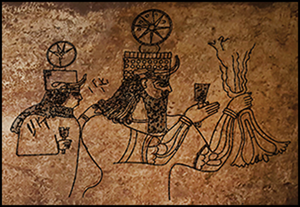No CrossRef data available.
Published online by Cambridge University Press: 11 May 2022

The Neo-Assyrian Empire of the early first millennium BC ruled over the ancient Near East. South-eastern Anatolia was controlled through vassal city-states and provincial structures. Assyrian governors and local elites expressed their power through elements of Assyrian courtly style. Here, the authors report a rare processional panel recently discovered at Başbük in south-eastern Turkey. Incised on the rock wall of a subterranean complex, the panel features eight deities, three with associated Aramaic inscriptions. The iconographic details and Syro-Anatolian religious themes illustrate the adaptation of Neo-Assyrian art in a provincial context. The panel, which appears to have been left unfinished, is the earliest-known regional attestation of Atargatis, the principal goddess of Syria c. 300 BC–AD 200.